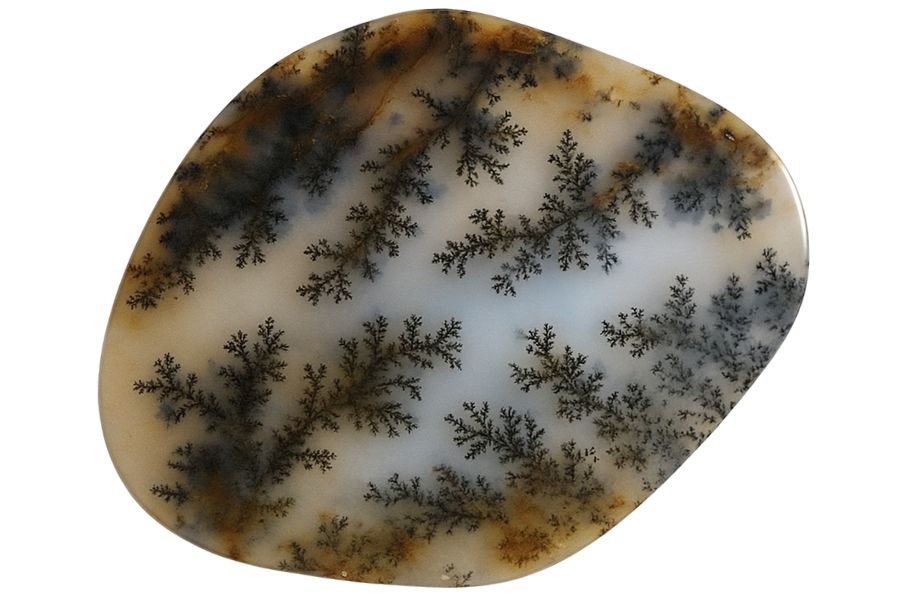There is a surprising number of spots to hunt for gems in Kansas. Beneath the surface, colorful stones wait in places shaped by water, wind, and time.
You don’t need fancy tools to find them, just patience and a sense of where to look. When you start noticing subtle differences in color and texture, each stone tells you a bit more about what’s hidden around you.
We’ll point you toward the areas where gems most often turn up. With the right approach, you’ll discover how much variety Kansas really holds beneath its soil.
- The extensive local experience and understanding of our team
- Input from several gem hunting groups and organizations
- The accessibility of the mining locations
- Safety and potential hazards when collecting
- Private and public locations
- A desire to include locations for both experienced gem hunters and those who are just starting out
Overall, we’ve been able to put together a great list that anyone can use to locate a lot of beautiful gems.
The Gemstones Found In Kansas You Can Mine
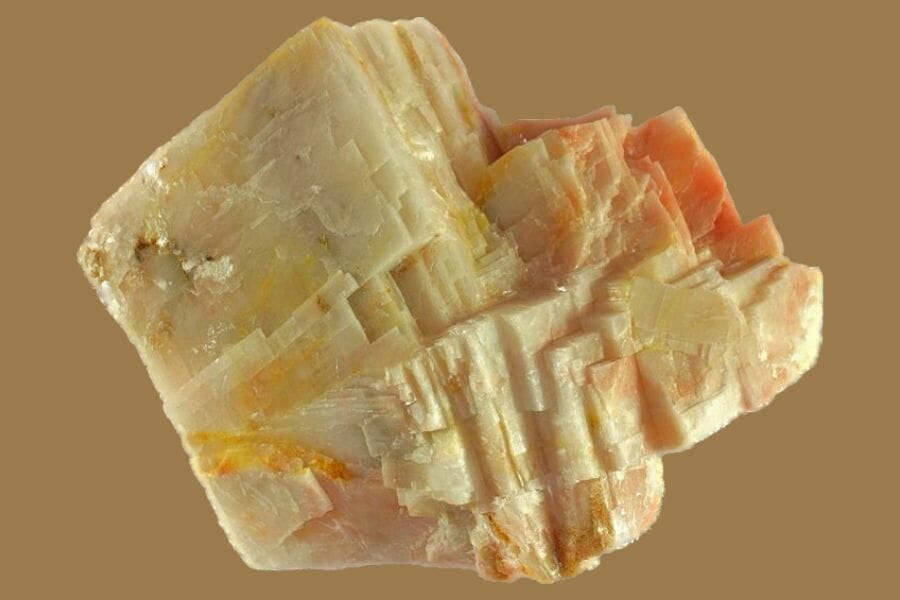
Our state may not always be top of mind when people think about gem mining, but did you know that it is rich in places and locations where gems abound? In this article, we’ll list down these places so that you can choose the best one for you.
We also prepared other guides that can help you locate gem mines near you, wherever you are. With the help of our guides and a hint of your luck, you might find your next gemstones on your next adventure!
Calcite
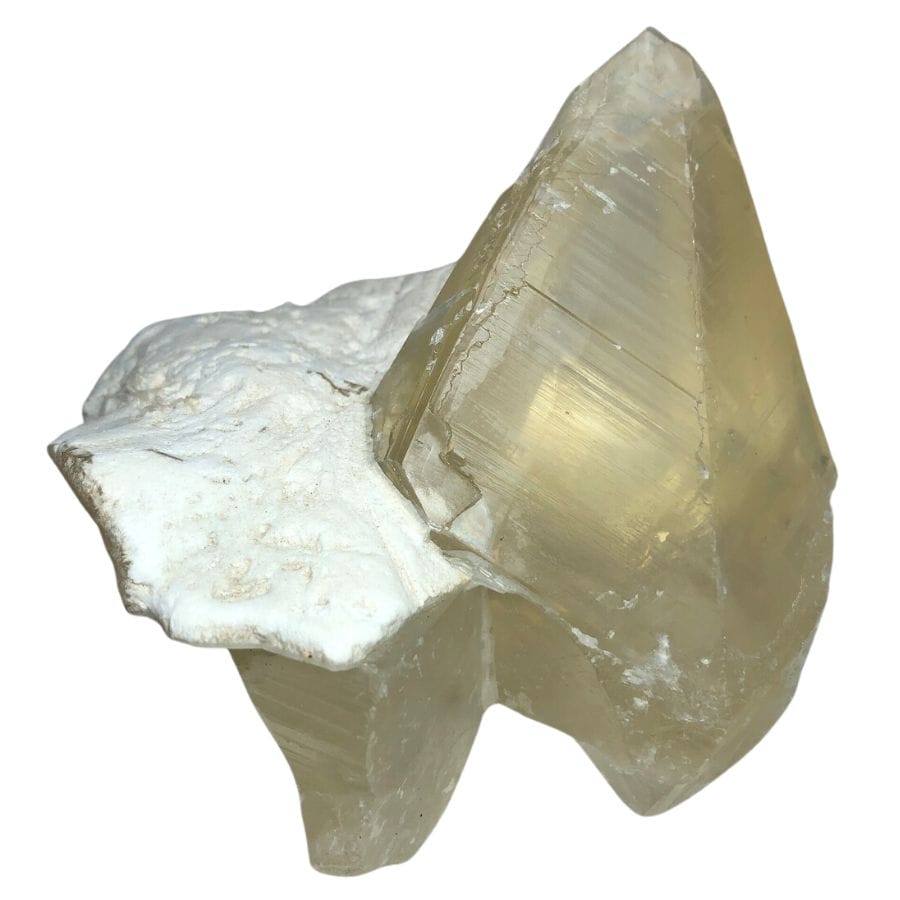
Calcite is a common mineral that forms from the shells and skeletons of marine organisms, which pile up on the ocean floor and turn into limestone over millions of years.
It can also form from the evaporation of mineral-rich water, creating stunning cave formations like stalactites and stalagmites.
One of the coolest things about calcite is its ability to split light into two rays, a property called double refraction. This means if you look through a clear piece of calcite, you’ll see everything double.
People use calcite in various ways, including in the construction industry to make cement and lime for mortar. It’s also ground up into a white powder and used as a filler in paper, paint, and plastic.
Where you can find calcite in Kansas
- Ottawa
- Picher Field
- Linn County
Cerussite
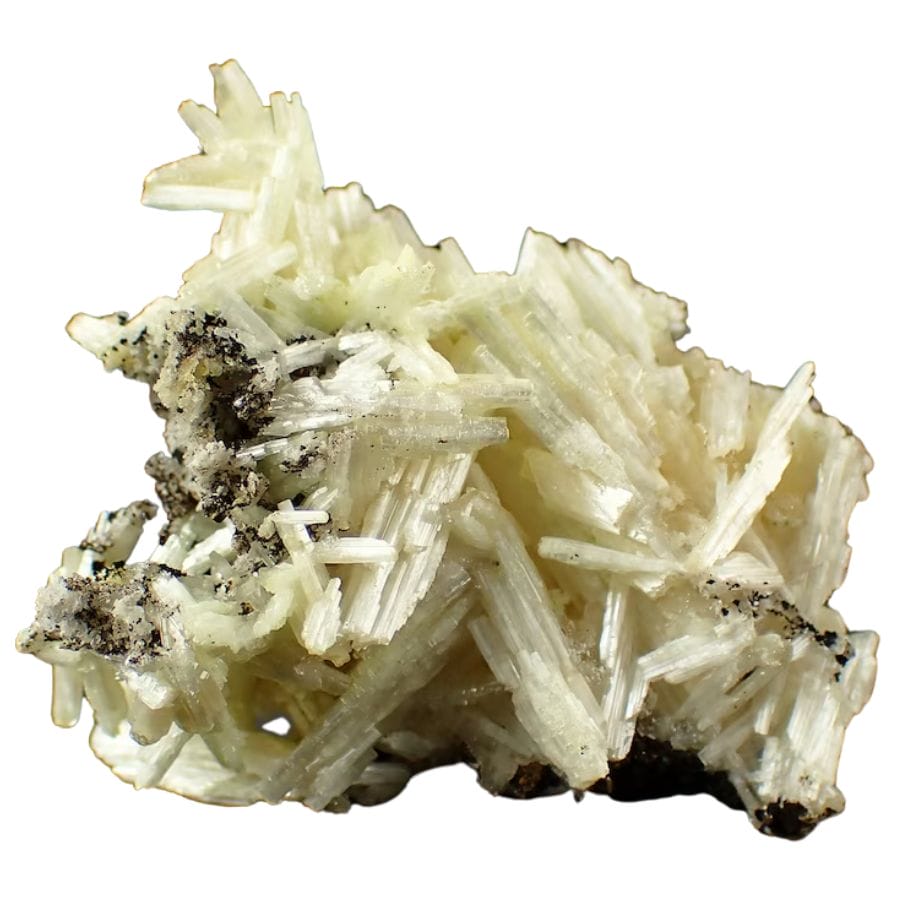
Cerussite is a mineral that forms from the oxidation of lead ore deposits, specifically when lead sulfide is exposed to air and water.
These crystals can be transparent or translucent and often have a diamond-like appearance because of their high refractive index. Because of this, cerussite often has a brilliant sparkle.
Cerussite crystals can also show a variety of forms, including star, snowflake, or needle shapes, adding to their appeal.
While cerussite is primarily collected for its beauty and rarity, it also has practical uses. It’s processed for lead extraction, which is then used in batteries, shielding against radiation, and in the construction of some types of glass and ceramics.
Where you can find cerussite in Kansas
- Cherokee County
- Linn County
Chalcopyrite
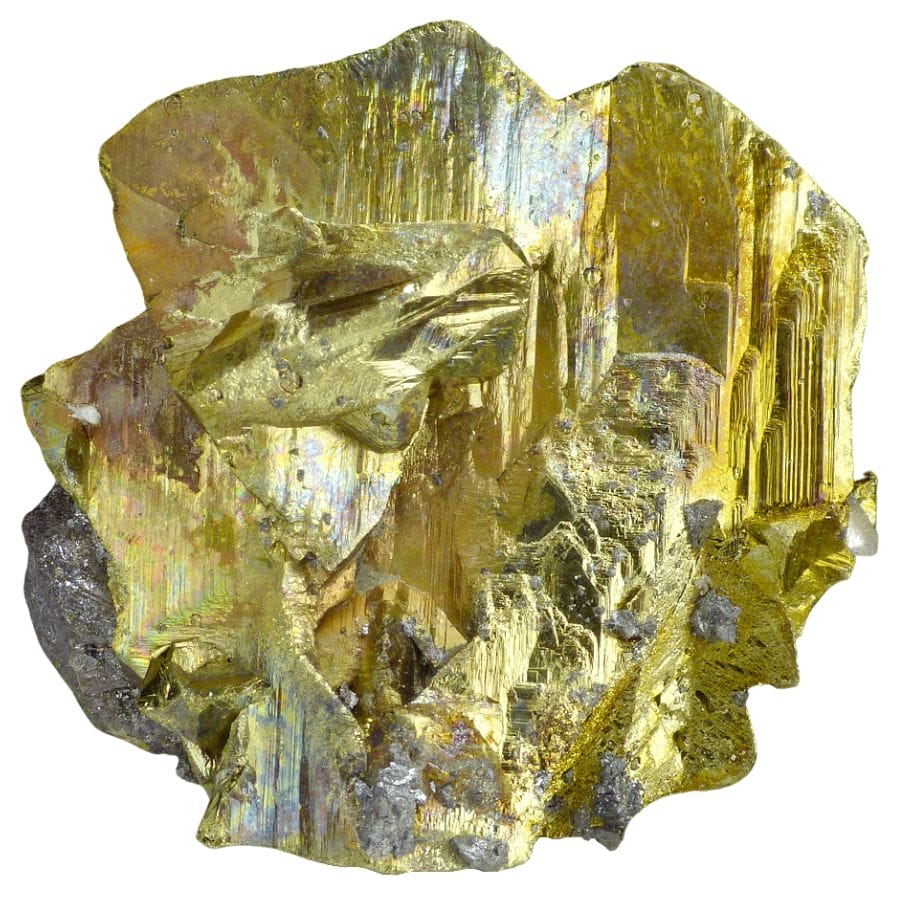
Chalcopyrite is a copper iron sulfide mineral that forms in hydrothermal veins, where hot, mineral-rich fluids move through spaces in rocks.
It’s recognized by its metallic luster and brass-yellow color, which can sometimes tarnish to show iridescent blues, greens, and purples.
Chalcopyrite can be mistaken for gold because of its color and metallic sheen, but it’s noticeably harder than real gold. However, it’s the most important ore of copper, used in wiring, plumbing, and the creation of alloys.
In addition to its use in extracting copper, chalcopyrite is collected by mineral enthusiasts for its vibrant colors and crystal forms. It plays a crucial role in our daily lives by providing copper for essential electrical equipment and technologies.
Where you can find chalcopyrite in Kansas
- Picher Field
- Paxson
- Prescott
- Viola
Diopside
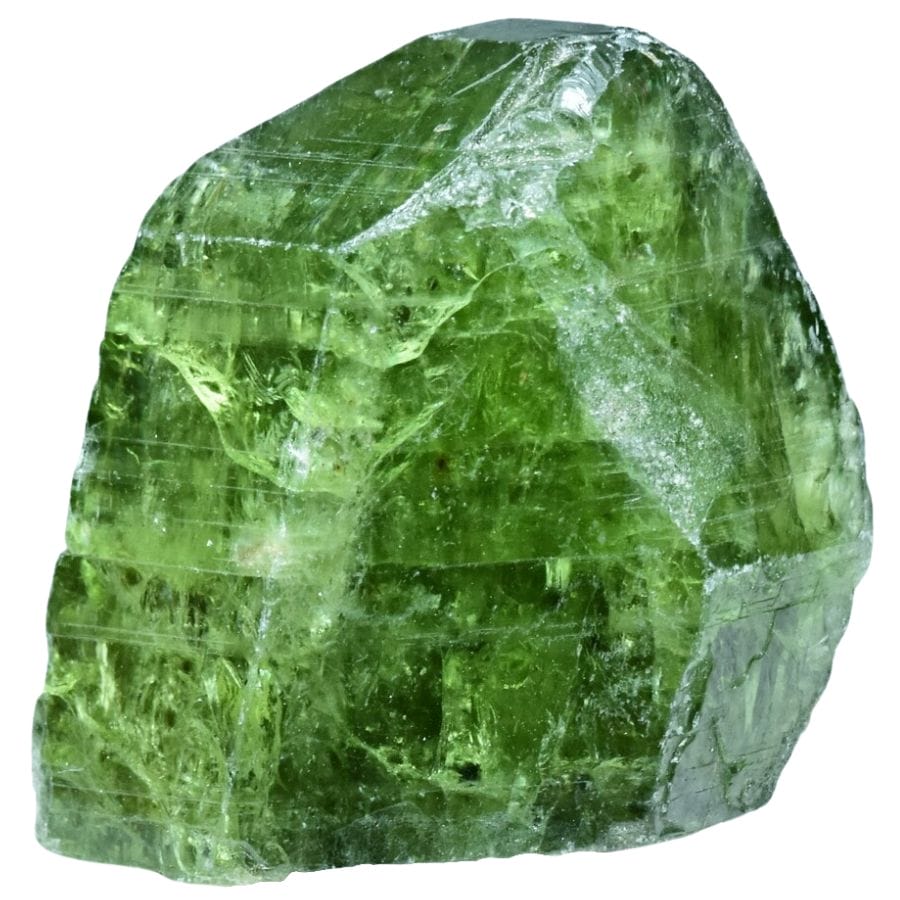
Diopside is a type of mineral that forms in high-pressure environments within the Earth, often found in metamorphic rocks. It can range in color from light green to dark green, and sometimes even black.
Diopside is known for its ability to display two different colors when looked at from different angles, a property known as pleochroism.
This characteristic, along with its vibrant color and crystal clarity, makes it a popular choice for gemstones in jewelry.
Aside from its use in jewelry, diopside serves an important role in the study of the Earth’s crust. Scientists use it to understand the conditions deep within the Earth where it forms, providing insights into the planet’s geological processes.
Where you can find diopside in Kansas
- Pawnee County
- Ottawa meteorite
- Bison meteorite
Hematite
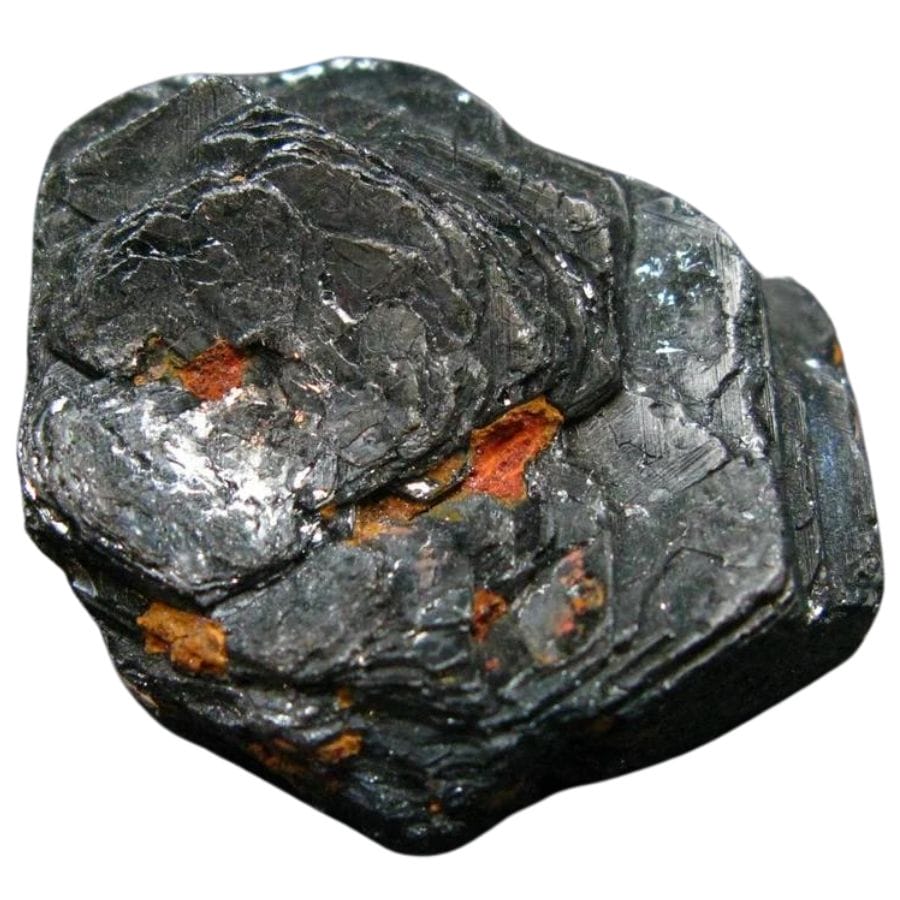
Hematite is a type of iron oxide mineral that forms when iron and oxygen combine in water or in moist areas within rocks. It’s known for its shiny, metallic appearance and can range in color from black to steel or silver-gray.
An interesting thing about hematite is that it’s often found in the shape of small, shiny spheres in sedimentary rocks, a form known as “hematite roses.”
These formations, along with its strong red streak when scratched across a surface, make hematite easy to identify.
This mineral is also an important ore of iron, used to make steel.
Where you can find hematite in Kansas
- Smoky Hill Valley
- Riley County
- Woodson County
Magnetite
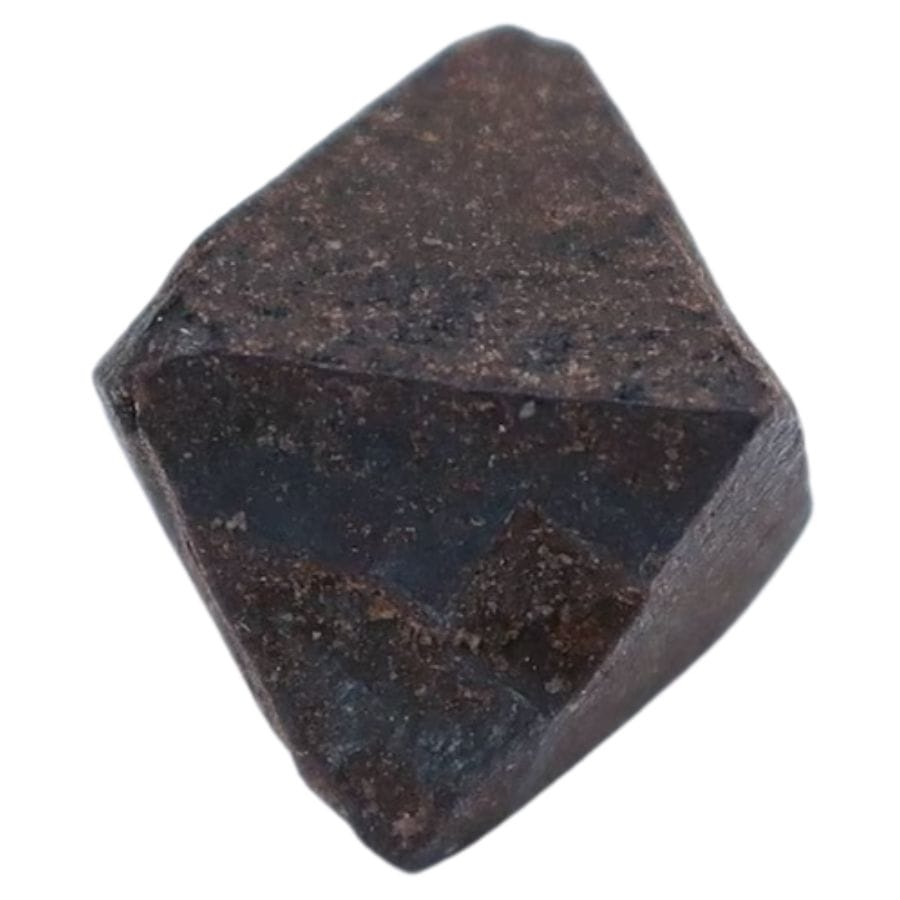
Magnetite is a magnetic mineral made of iron and oxygen, forming in both igneous and sedimentary rocks. It’s one of the few natural materials that can be magnetized, so it’s easily identifiable with a simple magnet test.
This mineral stands out among the other crystals found in Kansas because of its striking black color and metallic luster.
Magnetite’s strong magnetic properties also make it fascinating to study, especially for young scientists.
Beyond its appeal to collectors, magnetite plays a crucial role in the steel-making industry as a source of iron. It’s also used in various technological applications, including magnetic recording media, due to its magnetic characteristics.
Where you can find magnetite in Kansas
- Riley County
- Sheridan County
- Woodson County
Malachite
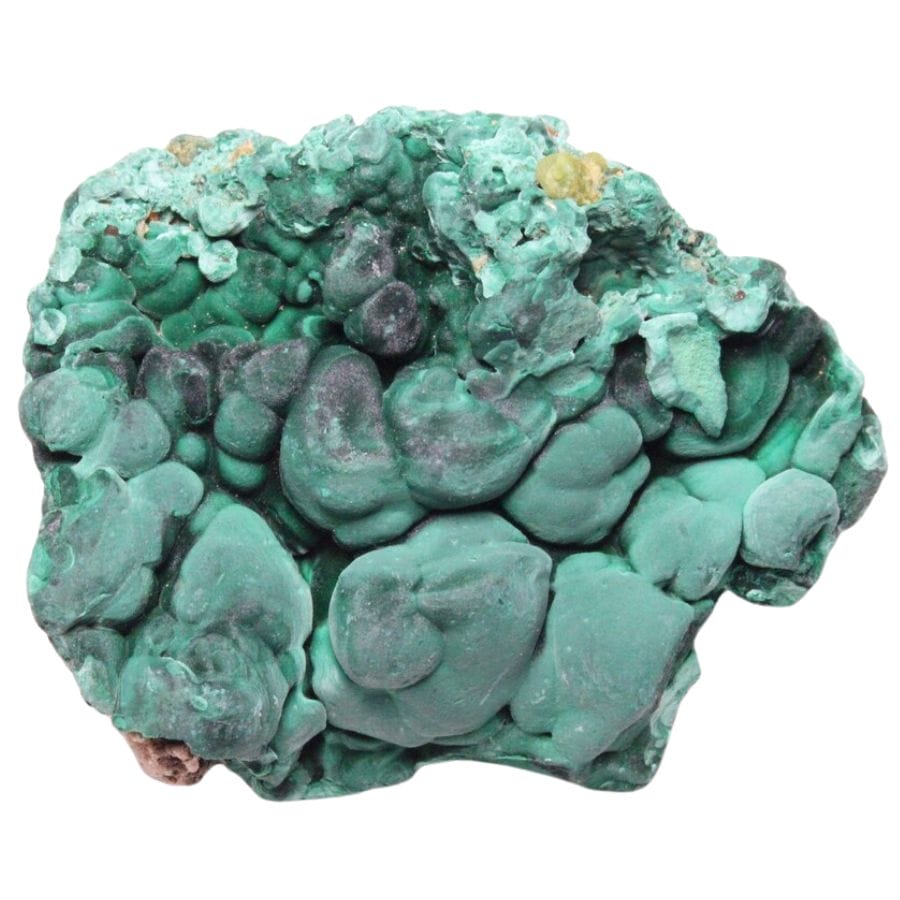
Malachite is a green mineral that forms in the upper layers of copper deposits where copper solutions react with limestone and other carbonate rocks.
It’s easy to recognize because of its vibrant green color and beautiful, natural crystal formations that look like waves or bands.
Malachite can polish up quite nicely. Its striking green hues and intricate patterns are also eye-catching, which is why malachite is a sought-after collector’s piece.
In addition, malachite has been historically important in extracting copper.
Where you can find malachite in Kansas
- Picher Field
- Harper
- Cimarron National Grassland
Agate
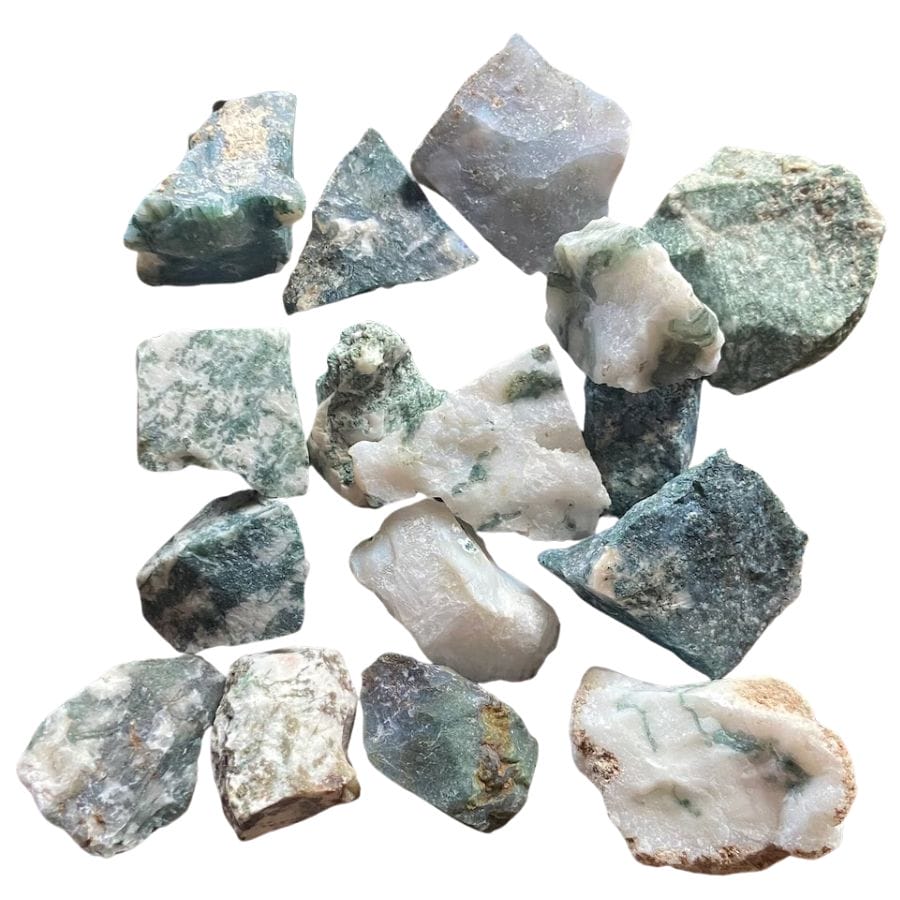
Agate is a colorful, patterned stone that forms when silica-rich water fills cavities in rocks, layering over time to create bands. These bands can look like waves, moss or tree branches, or even landscapes, making every agate unique.
This stone is not just pretty to look at; it’s also hard and resistant to scratches. Because of its beauty and durability agate is used jewelry such as necklaces, bracelets, and rings.
People also use agate in decorative items for the home, like bookends, coasters, and sculptures. Its natural patterns and colors add a touch of nature’s art to any space.
Where you can find agate in Kansas
- Clark County
- Trego County
- McLouth
Celestine
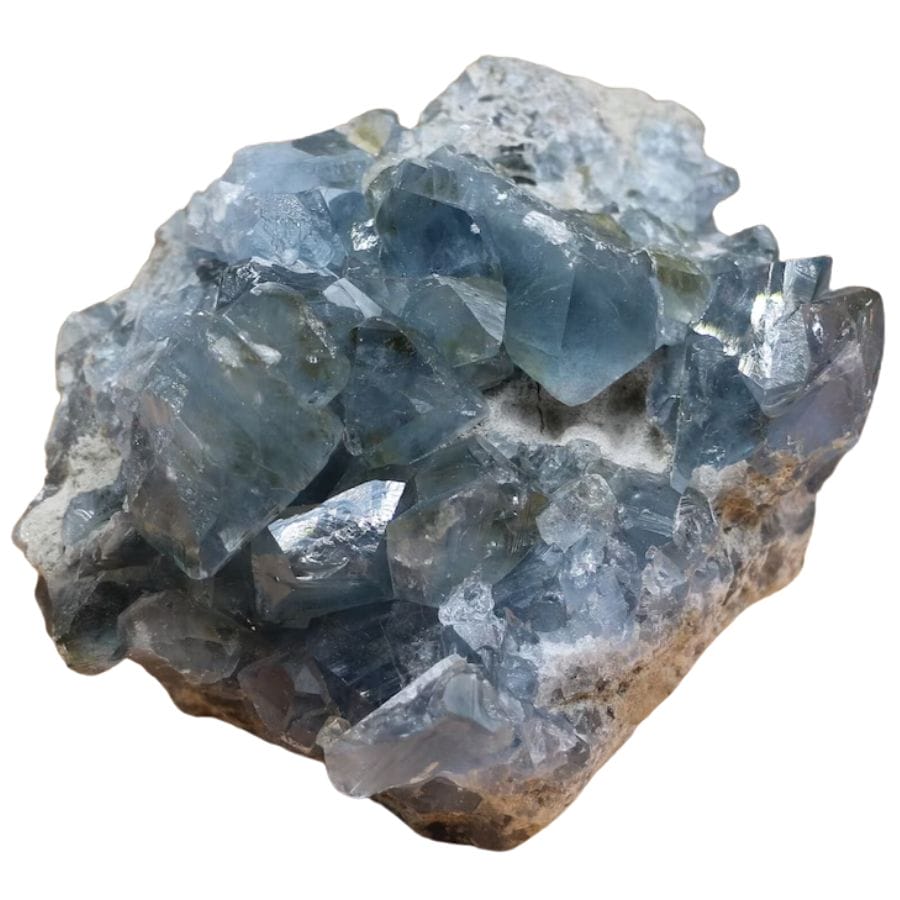
Celestine, also known as celestite, is a mineral that forms from the precipitation of sulfate-rich waters, typically found in sedimentary rocks.
It’s well-known for its delicate blue color, which can range from pale to deep sky blue, making it a favorite among collectors.
This mineral fluoresces under ultraviolet light, glowing with a cool, ethereal pale blue color. Its crystals can form in beautiful, well-defined shapes, adding to its appeal for decorative purposes.
Celestine is also used in the production of certain types of fireworks, due to its strontium content. Additionally, it plays a role in the manufacturing of glass and rubber.
Where you can find celestine in Kansas
- Ellsworth County
- Russell County
- McFarland
Garnet
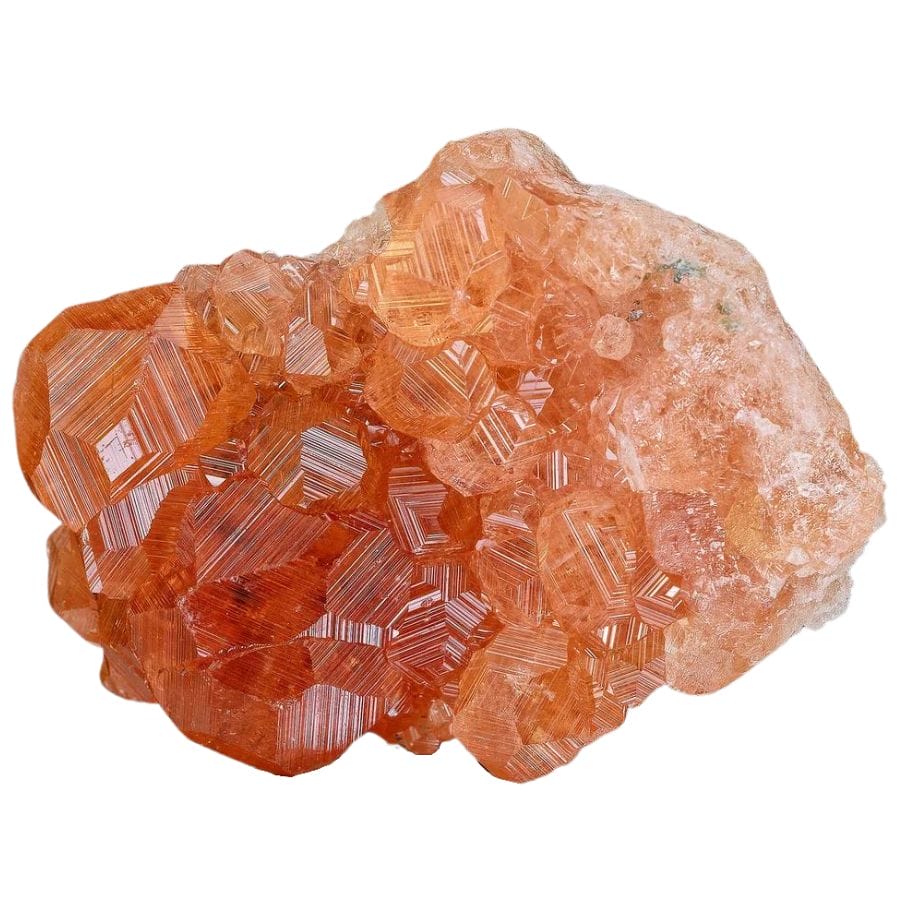
Garnet is a group of minerals that comes in a rainbow of colors, from deep red to vibrant green. These gems form under high pressure and temperature conditions, often found in metamorphic rocks.
Not all varieties of garnet can be found in Kansas, but you might come across types like grossular and pyrope.
Garnets are known for their hardness and durability, which makes them perfect for use in jewelry. Their rich colors and crystal clarity also make them highly sought after for necklaces, rings, and earrings.
Beyond their beauty, garnets have practical uses too. They’re used as abrasives in industry for cutting steel and other materials, and in water filtration systems because of their physical properties.
Where you can find garnet in Kansas
- Decatur County
- Bala kimberlite
- Leonardville kimberlite
- Stockdale kimberlite
Jasper
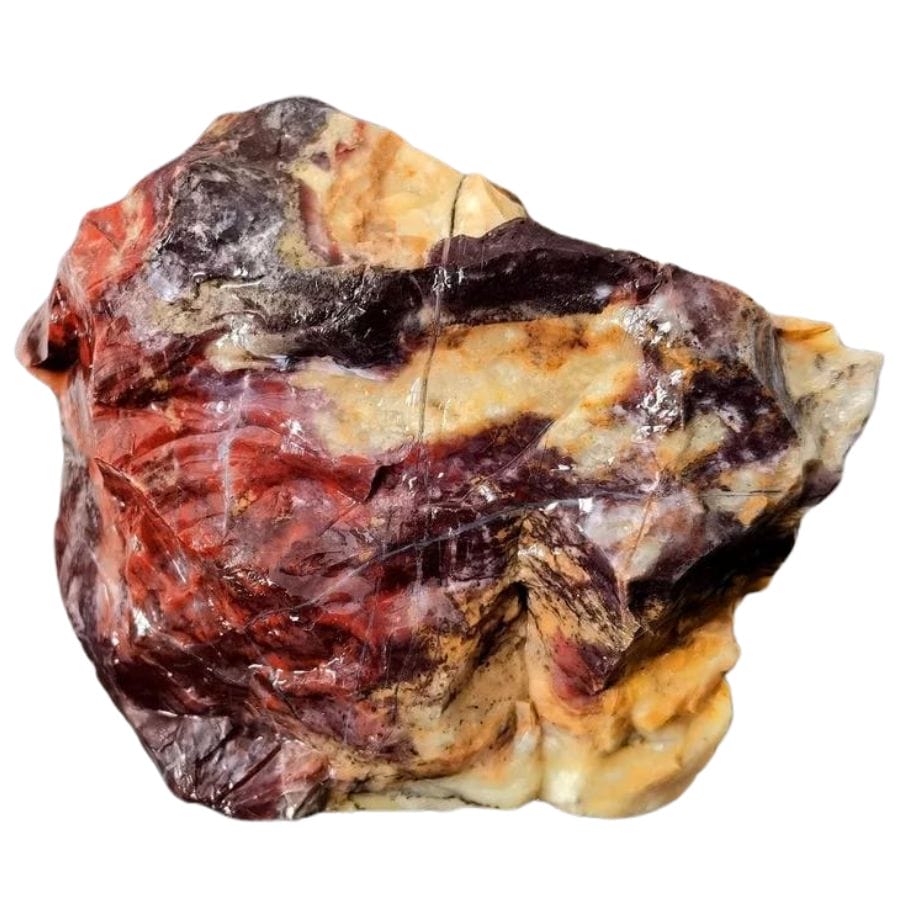
Jasper is a type of quartz that’s known for its grainy, opaque appearance and can come in many colors, including red, yellow, brown, and green.
It forms when silica-rich waters seep into cracks and spaces in rocks, hardening over time into solid quartz with unique patterns.
This stone is not just pretty; it’s also tough, which is why it’s often used in different kinds of jewelry and decorative items. The price of jasper can vary a lot depending on its colors and patterns, some of which are quite prized.
Where you can find jasper in Kansas
- Harper County
- Collyer
- McLouth
- Aetna
Jelinite Amber
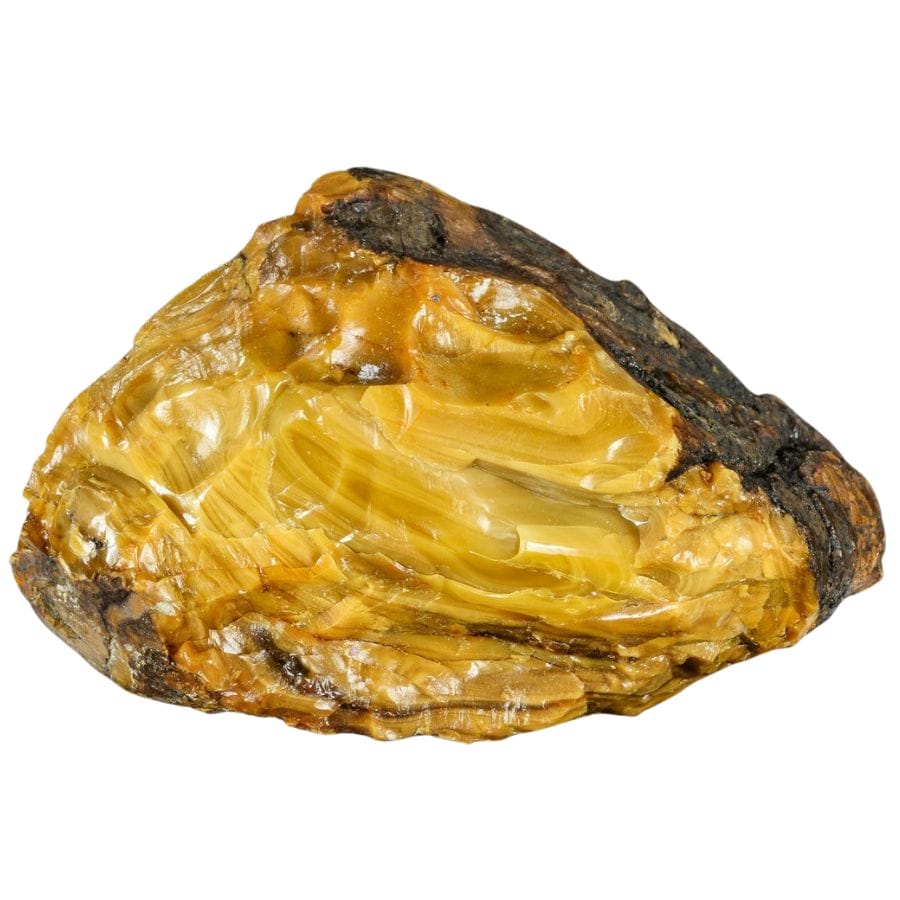
Jelinite amber is one of the rarest gemstones found in Kansas, known for being around 125 million years old. This unique resin turned to stone from the sap of ancient trees, capturing a moment in time from the Lower Cretaceous period.
The creation of a reservoir in 1949 submerged the only known deposit of jelinite, making these gemstones found in Arkansas incredibly rare.
Along with its scarcity, the amber’s vibrant yellow or orange colors and the possibility of containing ancient inclusions make it highly prized.
Today, because of its rarity, jelinite amber is sought after by collectors and scientists alike.
Where you can find jelinite amber in Kansas
- Ellsworth County
Moss Opal
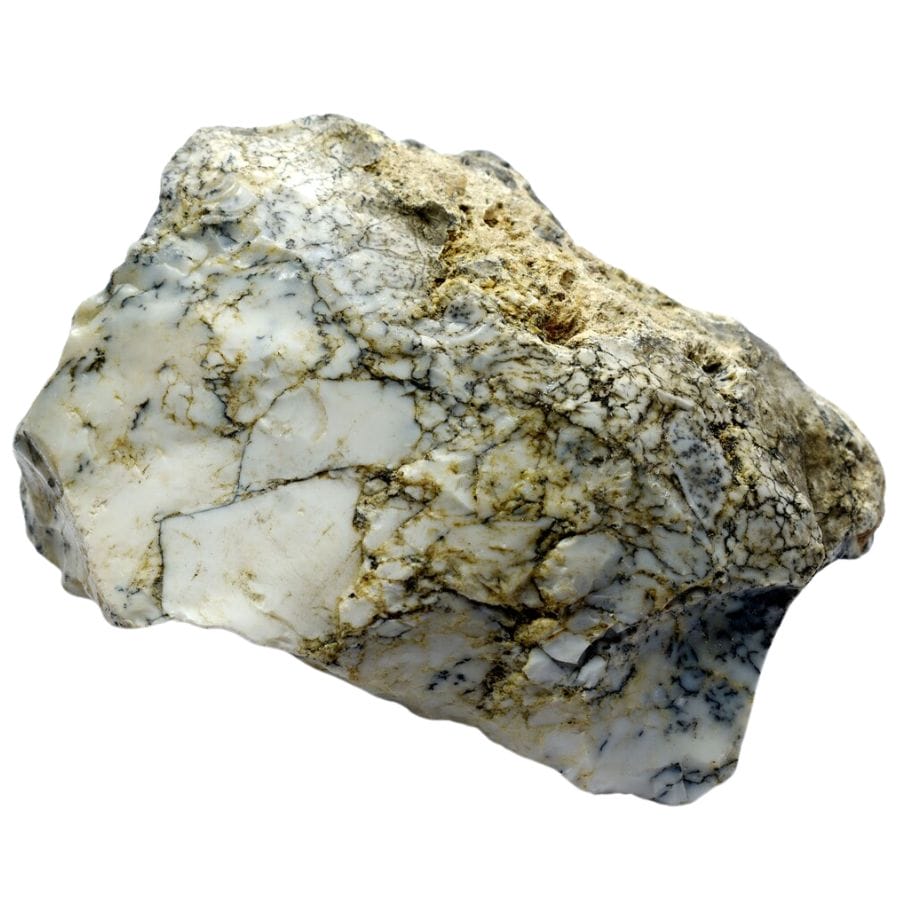
Moss opal is a type of opal that gets its name from the green, moss-like inclusions inside the stone. It’s formed when silica-rich water trickles down through the earth, filling cracks and spaces in rocks and eventually hardening into opal.
This stone is known for its unique appearance, with each piece showcasing a different pattern of green inclusions that resemble tiny forests.
The contrast between the green mossy patterns and the clear or milky background makes moss opal especially captivating.
People often use moss opal in jewelry because of its beauty and uniqueness. It’s also often collected by gem enthusiasts who appreciate the natural artistry and variety found in each stone.
Where you can find moss opal in Kansas
- Clark County
- Logan County
- Wallace County
Spinel
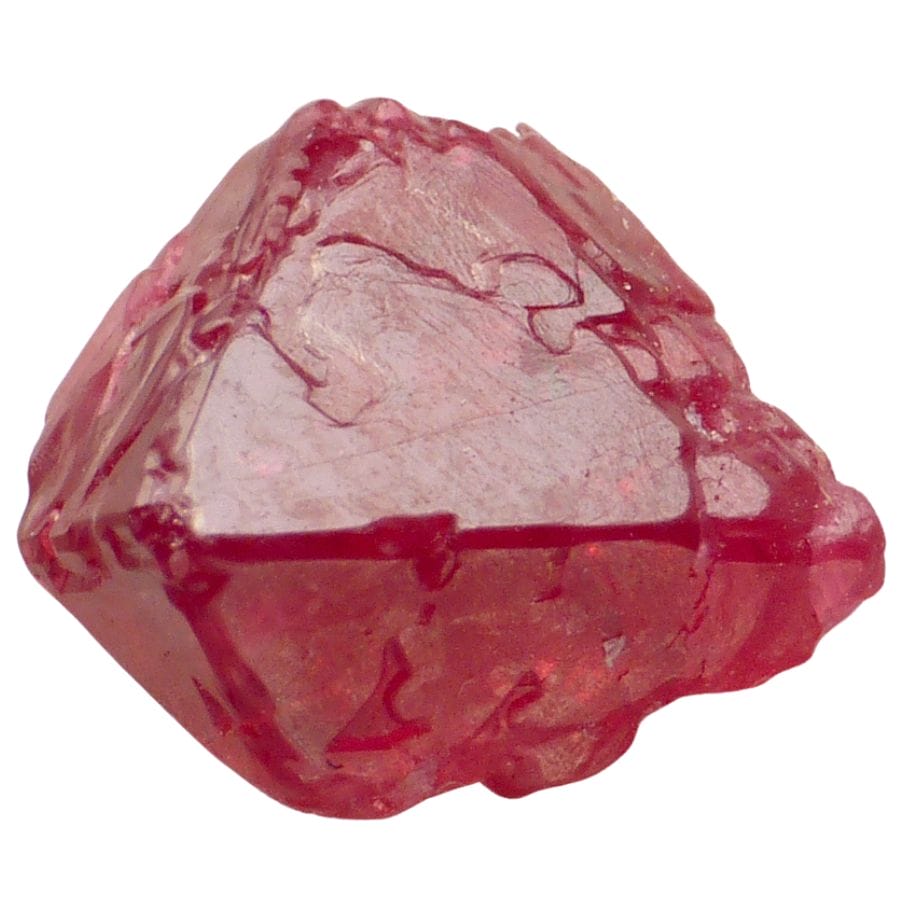
Spinel is a gemstone that forms when magnesium, aluminum, and oxygen combine under high heat and pressure deep within the Earth. It can be found in a variety of colors, including red, blue, and pink.
Spinel has a unique crystal structure that makes it exceptionally durable and resistant to scratches. Because of its bright luster and wide range of colors, it’s often used to make jewelry.
In addition to its use in jewelry, spinel is often collected by those who appreciate its beauty. It has also been mistaken for ruby in historical crown jewels, showcasing its quality and desirability.
Where you can find spinel in Kansas
- Decatur County
- Greeley County
- Washington County
Gypsum
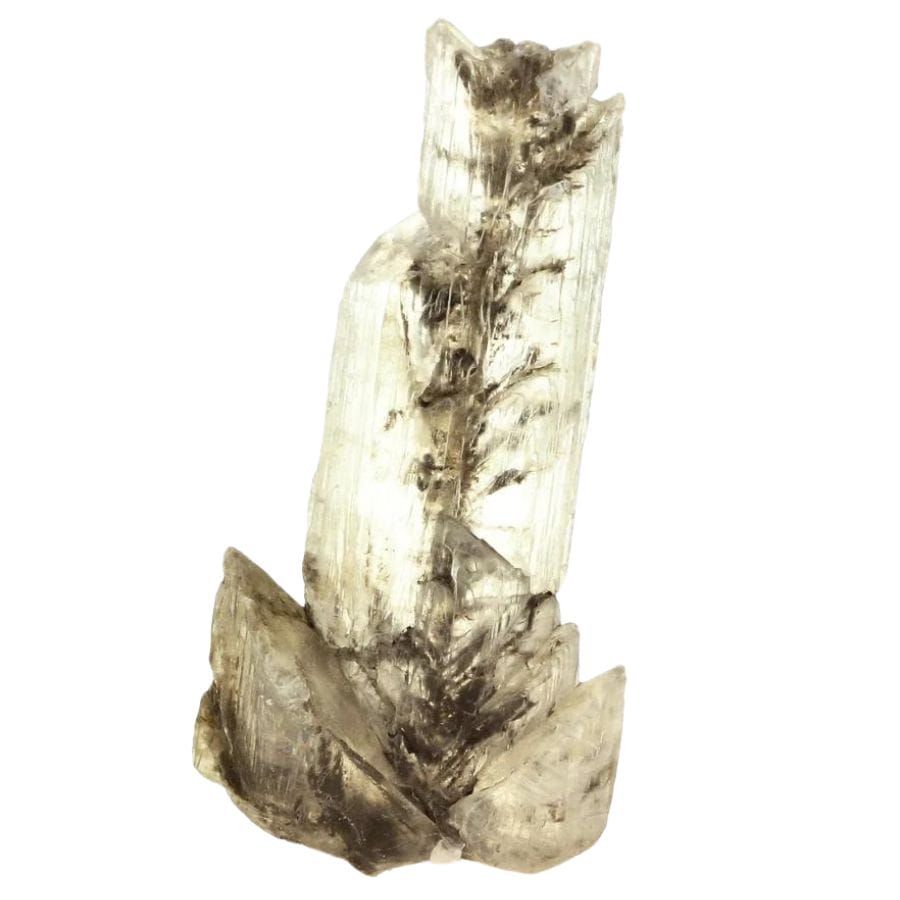
Gypsum is a soft mineral that’s created when water carrying dissolved calcium and sulfate evaporates, leaving the gypsum behind. It’s often found in large, flat crystals or in a fine, powdery form called alabaster.
Gypsum has a cool feature: it can be ground into a fine powder and, when mixed with water, it turns back into a hard solid. Thus, gypsum is incredibly useful for creating plaster, which can be molded into shapes or spread over walls.
Besides plaster, gypsum is also a key ingredient in the production of drywall, making it a critical material in building construction.
Farmers also spread gypsum on their fields because it helps loosen the soil, making it easier for water and roots to penetrate.
Where you can find gypsum in Kansas
- Hutchinson
- Picher Field
- Viola
Pyrite
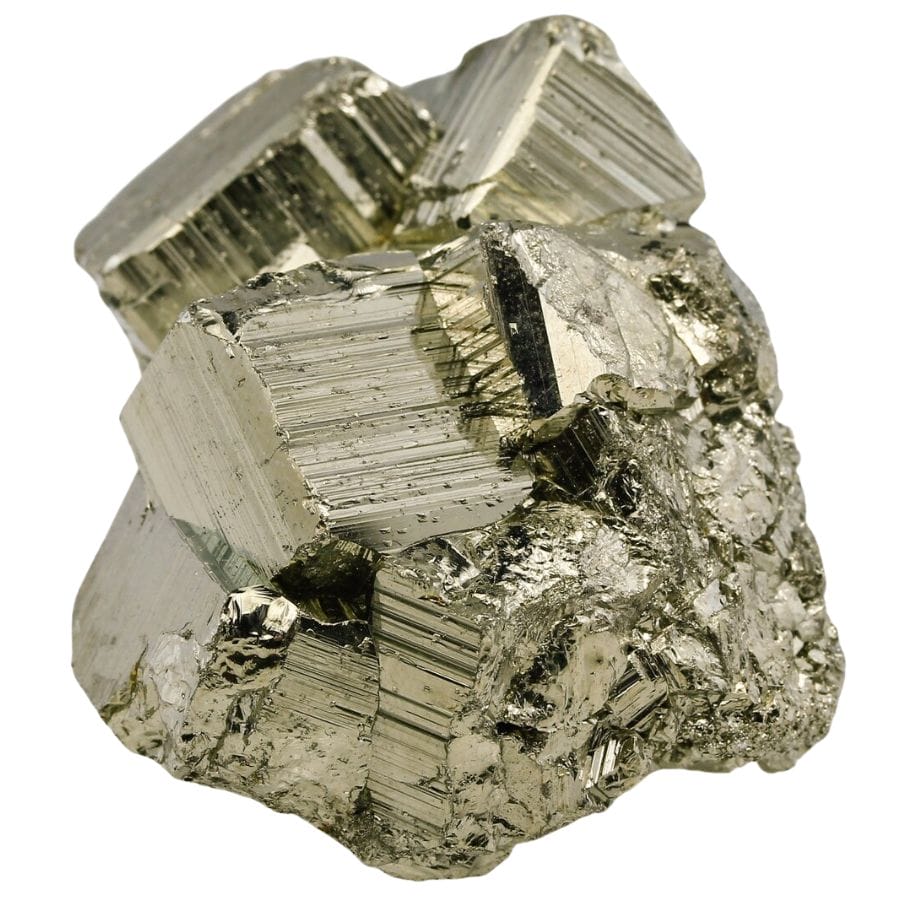
Pyrite, often called fool’s gold, is a shiny, yellow mineral that looks a lot like real gold to the untrained eye. It forms in different types of rocks through the reaction of iron and sulfur under certain conditions.
It’s also one of the most common rocks and minerals found in Kansas.
This mineral is not just a pretty face; it has interesting characteristics, such as creating sparks when struck against metal or stone. This feature made it useful in older times for starting fires.
Today, pyrite is used in the jewelry industry for its metallic luster and gold-like appearance. It’s also collected by mineral enthusiasts who appreciate its unique shapes and the way it shines in the light.
Where you can find pyrite in Kansas
- Picher Field
- Wallace County
- Ottawa
Quartz
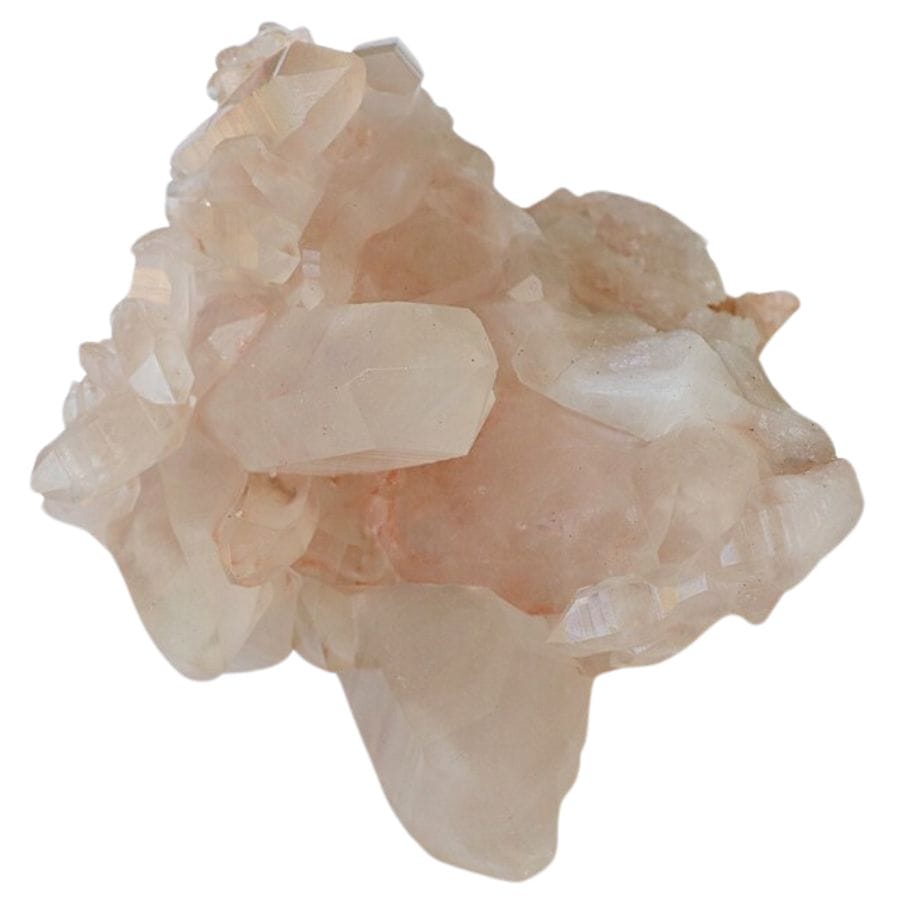
Quartz is a hard, crystalline mineral made of silicon and oxygen, two of the most abundant elements in the Earth’s crust. It forms at all temperatures in both igneous and sedimentary rocks and is known for its durability and variety of colors.
This mineral can be clear, white, or colored by impurities to become purple amethyst, yellow citrine, and other varieties. Because of its abundance and versatility, quartz is used in many ways.
Quartz is piezoelectric, which means it can generate an electric charge when pressure is applied to it. This makes quartz a crucial component in electronic devices like watches and cell phones.
Where you can find quartz in Kansas
- Cherokee County
- Smoky Hill Valley
- Cimarron National Grassland
Sphalerite
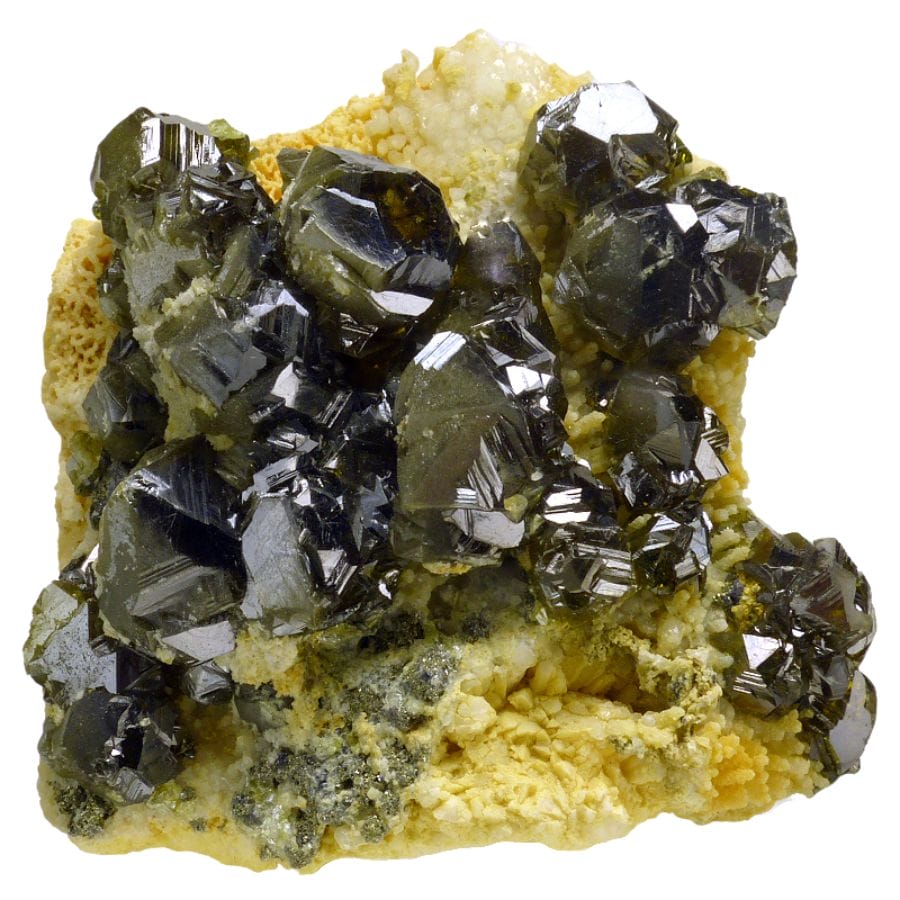
Sphalerite is the main ore of zinc and forms in both high and low-temperature ore veins, often alongside galena, pyrite, and other sulfides.
It’s highly reflective and can appear in a range of colors, from black to yellow to red, depending on its iron content.
This mineral is known for its exceptional dispersion, meaning it can split light into all the colors of the rainbow, much like a diamond. This characteristic makes it especially attractive for collectors and sometimes for use in jewelry.
The primary use of sphalerite is in the extraction of zinc, which is important for making alloys like brass and for galvanization, which protects steel from corrosion.
Zinc extracted from sphalerite is also used in batteries, paint, rubber, and agricultural products.
Where you can find sphalerite in Kansas
- Cherokee County
- Linn County
- Garnett
Our Favorite Places For Gem Mining In Kansas
Below is a list of our favorite places where you can find rare and more common gems. For adults, these are perfect if you’re looking for some real gem mining adventure here. And for kids, these places will give you a taste of the thrill and excitement that gem hunting can offer.
Always Confirm Access and Collection Rules!
Before heading out to any of the locations on our list you need to confirm access requirements and collection rules for both public and private locations directly with the location. We haven’t personally verified every location and the access requirements and collection rules often change without notice.
Many of the locations we mention will not allow collecting but are still great places for those who love to find beautiful rocks and minerals in the wild without keeping them. We also can’t guarantee you will find anything in these locations since they are constantly changing.
Always get updated information directly from the source ahead of time to ensure responsible rockhounding. If you want even more current options it’s always a good idea to contact local rock and mineral clubs and groups
Smoky Hill River
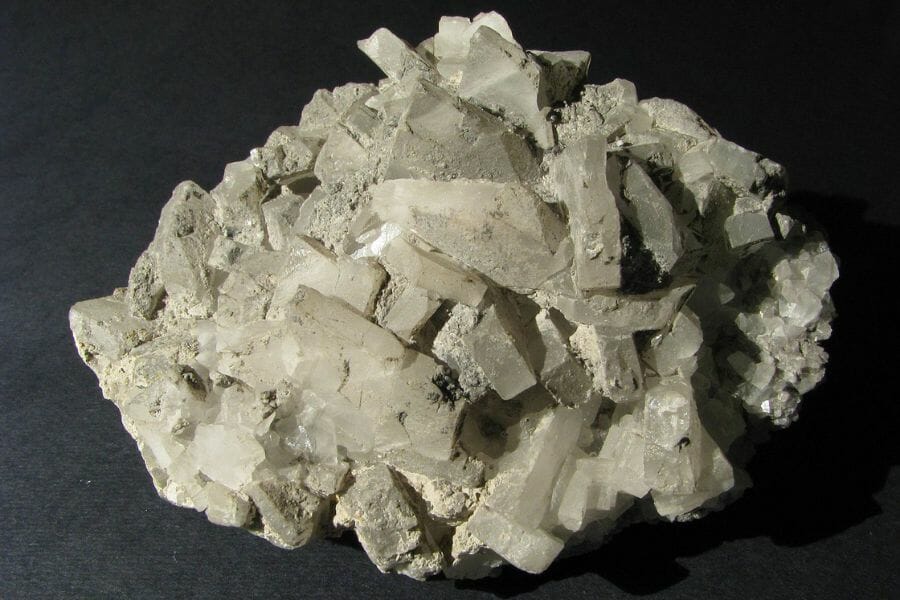
Smoky Hill River, KS
Smoky Hill River, a tributary of the Kansas River, got its name from the bluish-gray smoke that rises from burning coal beds along its banks. Aside from being know for gem mining, it’s also known for its historical significance to Native Americans, settlers, and pioneers. Gem mining has been a part of the history of this place since at least 1847 when there were reports of Indian artifacts found along its banks. This sparked a wave of gem mining in the area that continues today. Many people come here to collect gems along its banks or in riverbeds during low water levels. It’s also an excellent place to pan for gold since gold flakes can be found in some areas along the river.
The Types of Gems Found In The Smoky Hill River
This place is known for the many kinds of gemstones that can be found here, but it is most abundant in the following:
- Agate
- Amber
- Barite
Sometimes, you can confused over some of the more common gems that are found here. We’ve put together a few guides to telling specific gems apart:
The Best Time To Visit Smoky Hill River
If want to visit here, the best time would be during the summer months of June, July, and August, when the water levels are typically lower and it is easier to access the riverbeds. The temperatures are also warmer, making it more comfortable to be outside.
If you want REAL results finding incredible rocks and minerals you need one of these 👇👇👇
Finding the coolest rocks in isn’t luck, it's knowing what to look for. Thousands of your fellow rock hunters are already carrying Rock Chasing field guides. Maybe it's time you joined the community.
Lightweight, mud-proof, and packed with clear photos, it’s become the go-to tool for anyone interested discovering what’s hidden under our red dirt and what they've already found.
Join them, and make your next rockhounding trip actually pay off.
What makes it different:
- 📍 Find and identify 140 incredible crystals, rocks, gemstones, minerals, and geodes across the USA
- 🚙 Field-tested across America's rivers, ranchlands, mountains, and roadcuts
- 📘 Heavy duty laminated pages resist dust, sweat, and water
- 🧠 Zero fluff — just clear visuals and straight-to-the-point info
- ⭐ Rated 4.8★ by real collectors who actually use it in the field
Red Hills
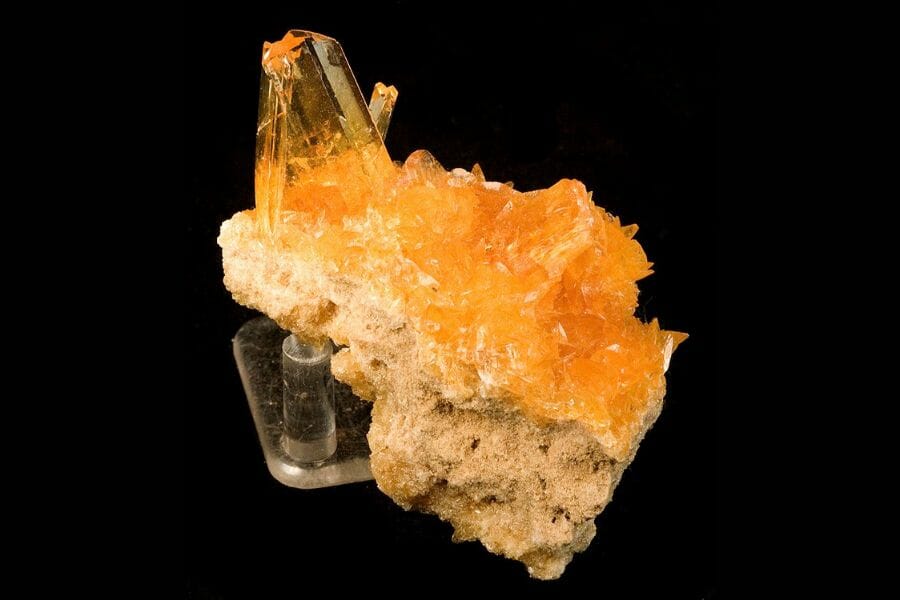
South Central KS
Red Hills, located in the Flint Hills region and a part of the larger Flint Hills National Park, has a long history of gem mining. In fact, many locals have been involved in the industry for generations. It began during the late 19th century when prospectors discovered large deposits of gems and minerals. The area quickly became a popular destination for miners looking to strike it rich. By the early 20th century, however, most of these deposits had been exhausted and gem mining activity declined drastically. In recent years, though, there has been a resurgence in interest in gem mining due to an increase in available resources as well as improved technology that makes it easier to extract gems.
The Types of Gems Found In The Red Hills
This place boasts of having all three varieties of Gypsum:
- Rock Gypsum
- Satin Spar
- Selenite
The Best Time To Visit Red Hills
The best time to visit here is in the summer months, when temperatures are warm and the ground is dry, making it easier to dig and search for gems. Visiting during the spring or early summer may also be a great time, not only to mine gems, but also to explore the area.
Mount Casino
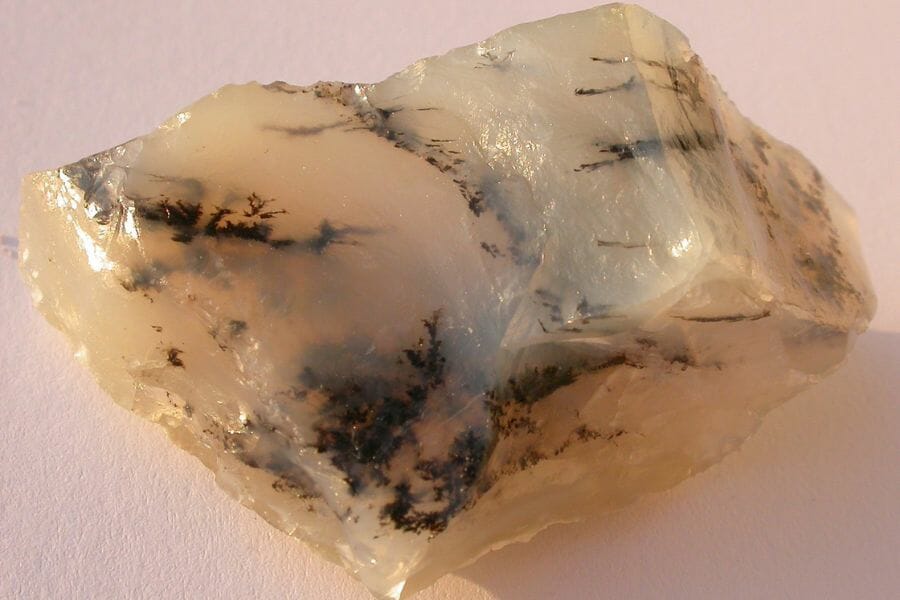
Clark County, KS
Mount Casino has been a popular destination for gem miners since the early 1900s, when prospectors discovered deposits of different gemstones in the area. Over the years, Mount Casino has become known for its wide variety of gems and minerals. When you visit here, you can explore the mine, pan for gems, and take home your finds. You can also avail of the guided tours and educational programs that will teach you about geology and gemstones. Mount Casino is also home to an active rock club that hosts events throughout the year.
The Types of Gems Found In The Mount Casino
This location has plenty of different kinds of gemstones, but most abundant of these are the following:
- Jasper
- Moss Agate
- Moss Opal
The Best Time To Visit Mount Casino
Planning to visit? The best time would be during the summer months. The warm weather during this time makes it easier to search for gems.
The Walters’ Farm – Great for kids
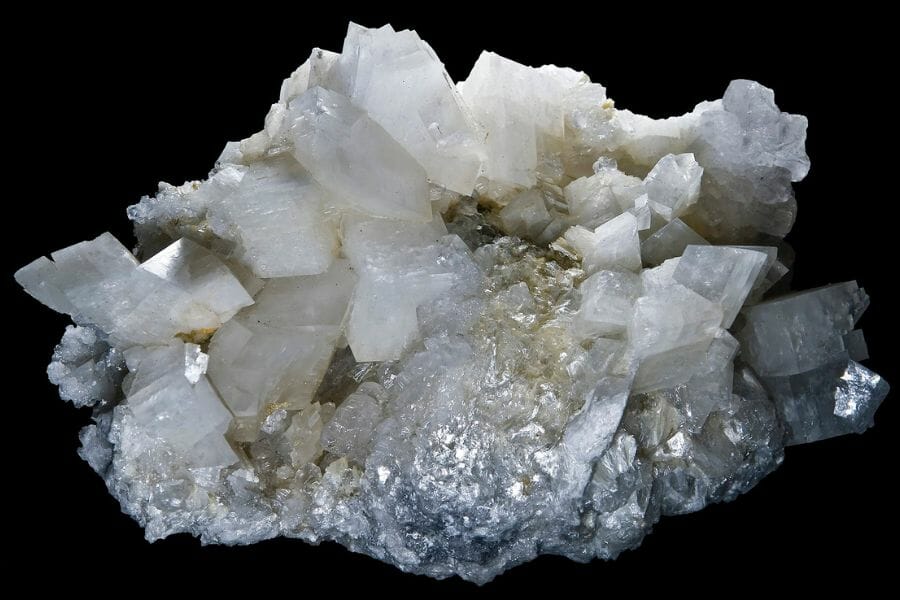
10001 NW U.S. Highway 77, Burns, KS 66840
Located in the rolling hills near the town of Burns, The Walters’ Farm is a family-owned gem mining operation that has been in business since 1995. When you visit here, you can pan for gems, not only from our region, but from around the world. You can also avail of their offer of a wide variety of polished stones and jewelry for sale on-site.
The Types of Gems Found In The Walters’ Farm
This place offers the chance to mine different kinds of gemstones, even those that are not naturally found in our state. It makes this place a great location for kids who are just being introduced to gem mining.
The Best Time To Visit The Walters’ Farm
The farm is open from mid-May through mid-September, and the gem mining can be done during the warm summer days. It’s best to avoid visiting here during the winter months, as it may be too cold and wet to do any gem mining then.
Deanna Rose Children’s Farmstead – Great for kids
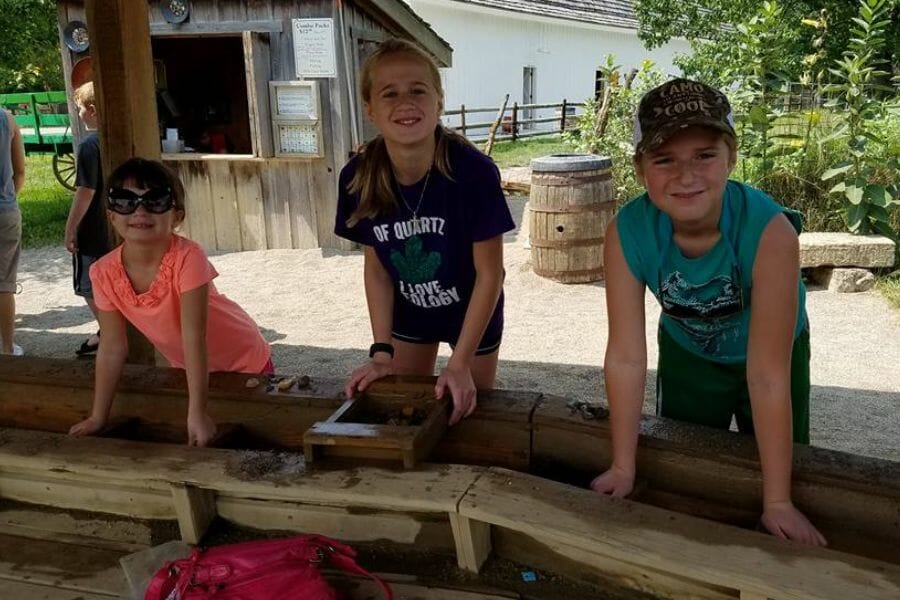
13800 Switzer Rd Overland Park, KS 66221
Deanna Rose Children’s Farmstead is a 12-acre educational farm that offers educational activities and entertainment for kids of all ages. The farm was founded in 1978 as a living tribute to fallen police officer Deanna Rose, who was killed in the line of duty. The farmstead offers a variety of activities for children and one of the most popular attractions is the gem mining activity. Kids can pan for gems in the sluice area and then take home their finds.
The Types of Gems Found In The Deanna Rose Children’s Farmstead
This place has different kinds of gemstones, both rare and more common, that kids can have fun searching for.
The Best Time To Visit Deanna Rose Children’s Farmstead
The gem mining activity here is only available during the summer months, typically from June to August, so if you want to visit here, those months would be the best time.
Other Great Options For Real Gem Mining in Kansas
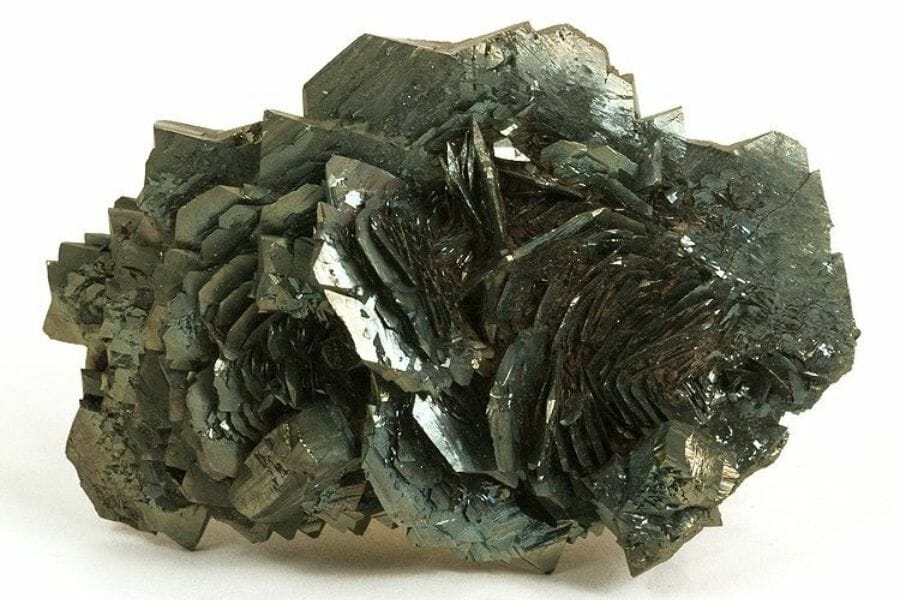
Our favorite places are not the only ones great from gem mining here. In fact, there are tons of other great locations here where you can find different interesting gemstone. These are some of them.
- Morrill – Celestite
- Medicine Lodge River – Agate, Jasper
- Verdigris River – Agate, Chalcedony, Jasper
- Old River Bed – Agate, Jasper, Moss Agate
- Blue Rapids – Agate, Jasper
- McLouth – Agate, Chalcedony, Jasper
- Wallace – Moss Opal
- Ashland – Moss Agate
- South Fork Solomon River – Agate
- Sharon Springs – Agate
- Baxter Springs – Pyrite, Sphalerite
- West Mineral – Calcite, Dolomite, Marcasite, Pyrite, Sphalerite
- Pony Creek – Celestite
- Republican River – Agate, Jasper
- Chikaskia River – Agate, Jasper
- Big Blue River – Agate, Chalcedony, Jasper
- Rose Dome – Amethyst, Quartz
The Top Public Gem Mining Locations in Kansas
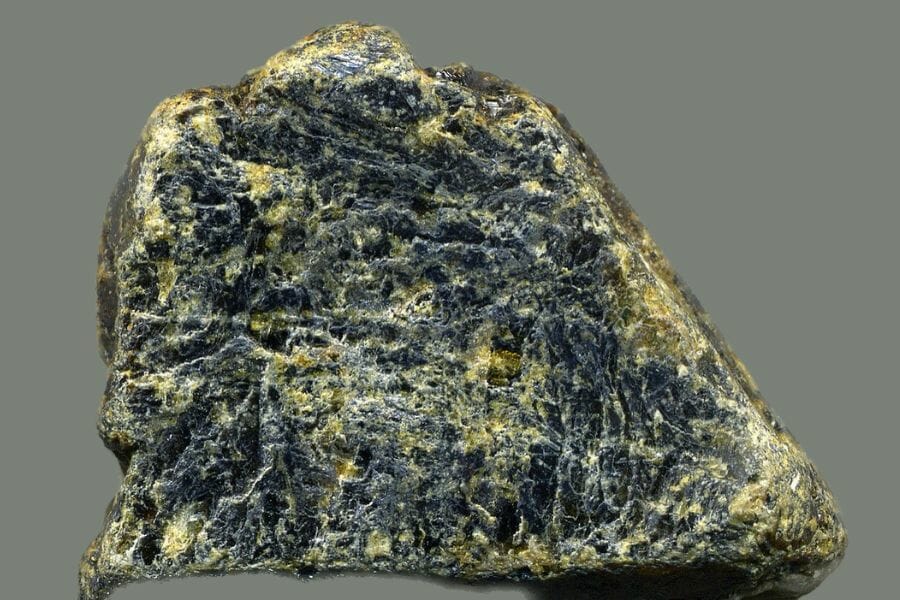
If you’re looking for more family-friendly places, we’ve got you covered! Below are some more places where you and your kids can have fun searching for gems together.
- Strataca – 3650 East Avenue G, Hutchinson, KS 67501
- Rock City Park – 1051 Ivy Rd, Minneapolis, KS 67467
- Great Wolf Lodge Water Park – 10401 Cabela Dr, Kansas City, KS 66111
Kansas Gem Mining Laws And Regulations
The Kansas Department of Wildlife, Parks and Tourism (KDWPT) does have some general guidelines for recreational gem mining on public lands. Any recreational gem mining activities should be conducted in accordance with all applicable state and local laws. In addition, it is important to note that the removal of minerals from public lands requires a permit from the KDWPT. It is also important to obtain permission from the landowner before engaging in any search for gems on private lands. It is illegal to trespass on private property without written permission from the owner.
Finally, it is recommended that all recreational gem miners take proper safety precautions, such as wearing protective gear and avoiding hazardous areas.
For more information on the state’s gem mining laws and regulations, visit the Kansas Department of Wildlife, Parks and Tourism’s link above.
Additional Places To Mine For Gems In Nearby States
If you’ve already tried all of our recommendations above or are planning a trip out of the state you should check out our guides for neighboring states:
If you have any recommendations we haven’t covered please leave them in the comments below!

